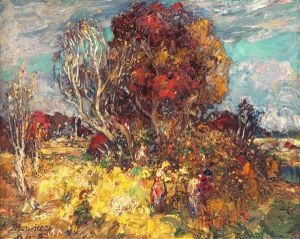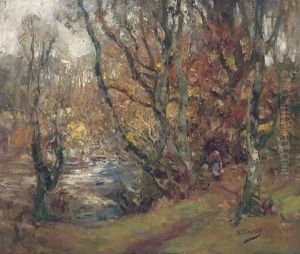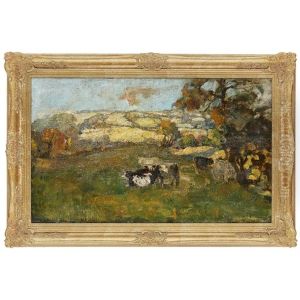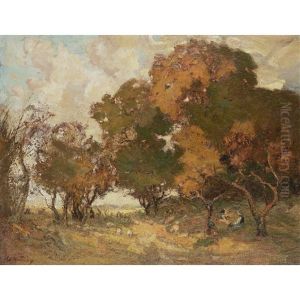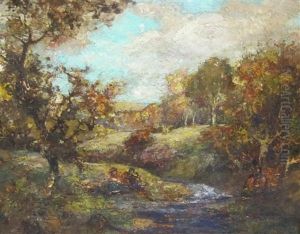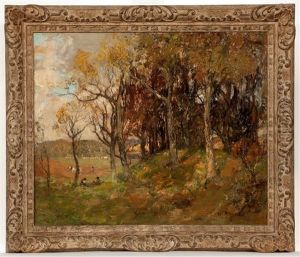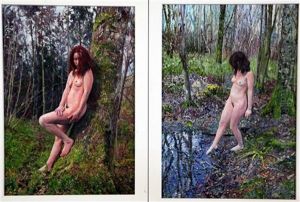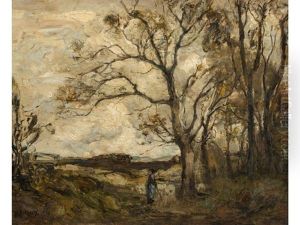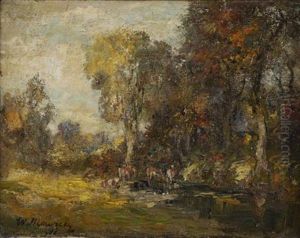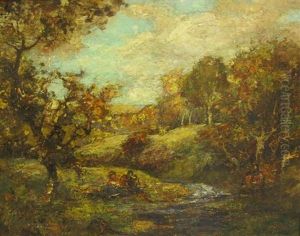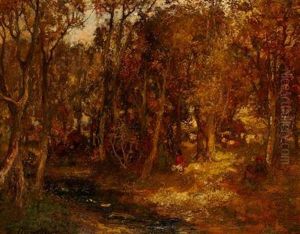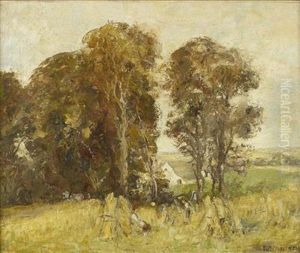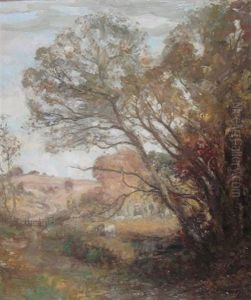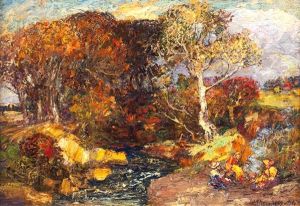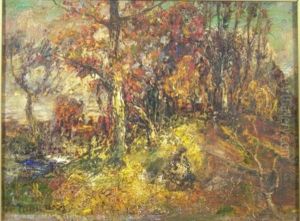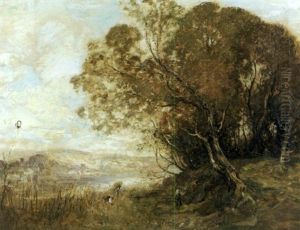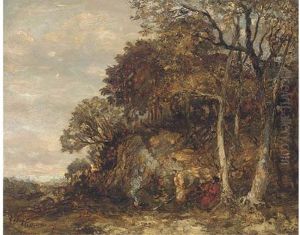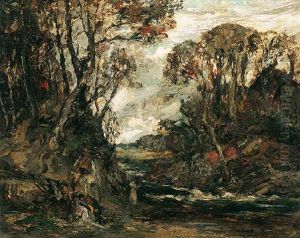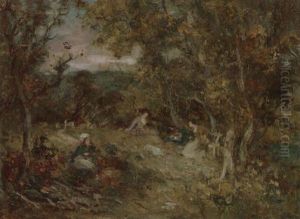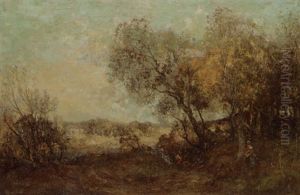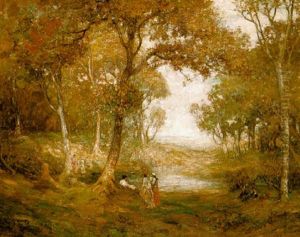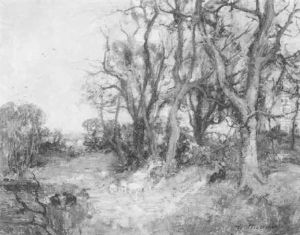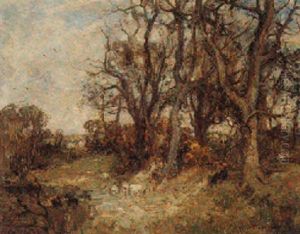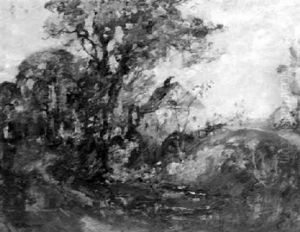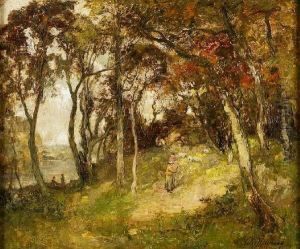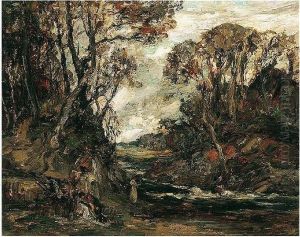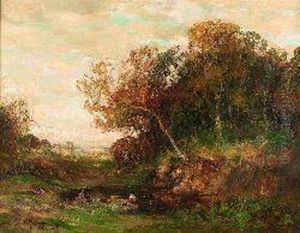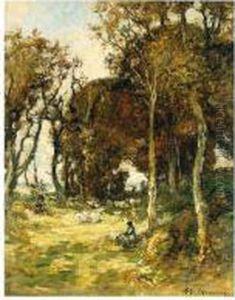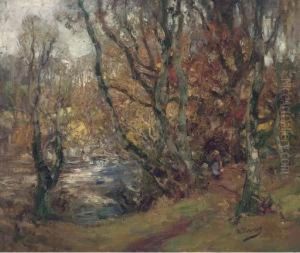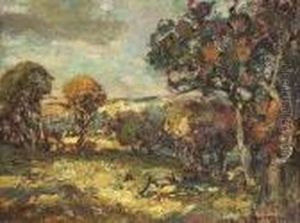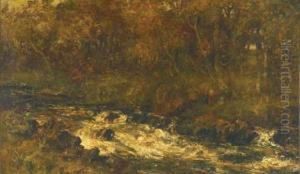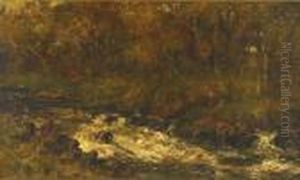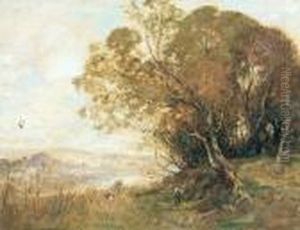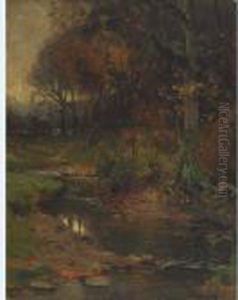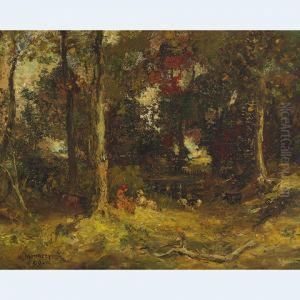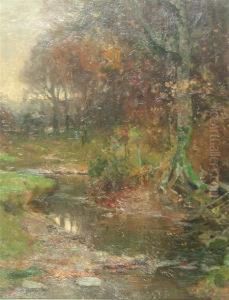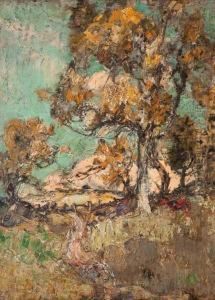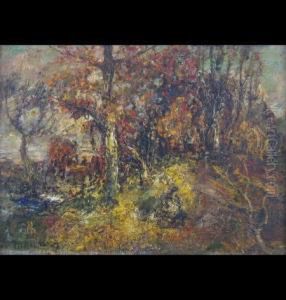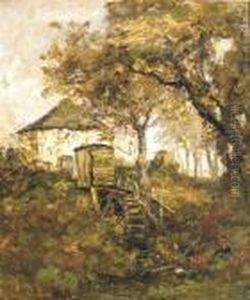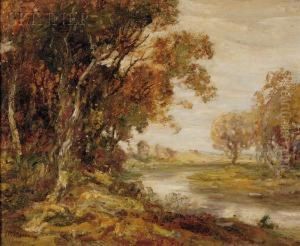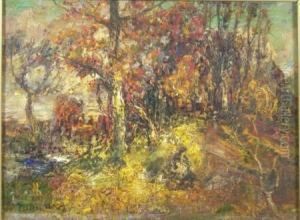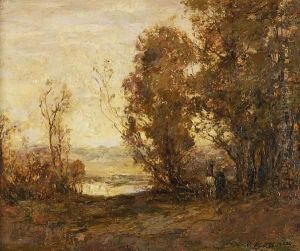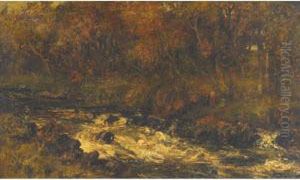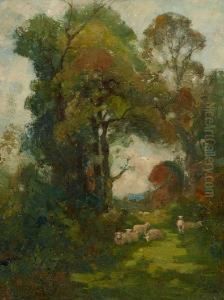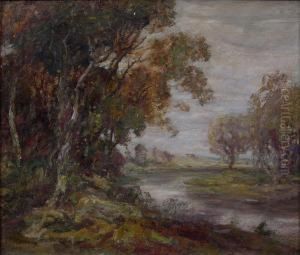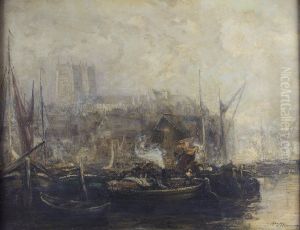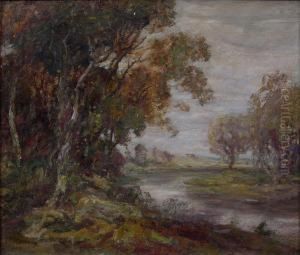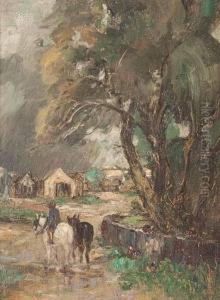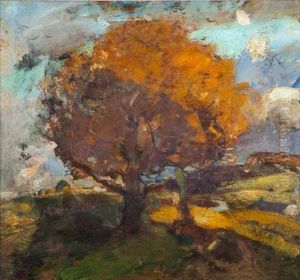William Mouncey Paintings
William Mouncey was a British artist known for his landscape paintings that often depicted the rural scenery of Cumberland and Westmoreland, now part of Cumbria, in the northwest of England. Born in 1852 in Kippford, a small coastal village in Scotland, Mouncey developed an affinity for the natural beauty of the countryside early in his life.
Mouncey's artistic talents became apparent at a young age, and he pursued his passion for painting despite the limited opportunities available to him in his rural surroundings. He was largely self-taught, although he may have received informal training or influence from other local artists of the time. Mouncey's style was characterized by a robust use of color and a keen observation of light and atmosphere, which he employed to capture the lush landscapes and the changing moods of the seasons.
Throughout his career, Mouncey exhibited at various institutions, including the Royal Scottish Academy and the Glasgow Institute of the Fine Arts. His work was well-received, and he gained a reputation as a skilled painter of the Scottish and English countryside. Mouncey's paintings are considered to provide a valuable visual record of the rural landscapes during a time of significant change, as the Industrial Revolution was altering the face of Britain.
William Mouncey's life was relatively short; he died in 1901 at the age of 49. Despite his early death, he left behind a body of work that continues to be appreciated for its vibrant depiction of the natural world. His paintings are held in several public collections, including the Dumfries and Galloway Council, and they continue to be sought after by collectors of British landscape art.
